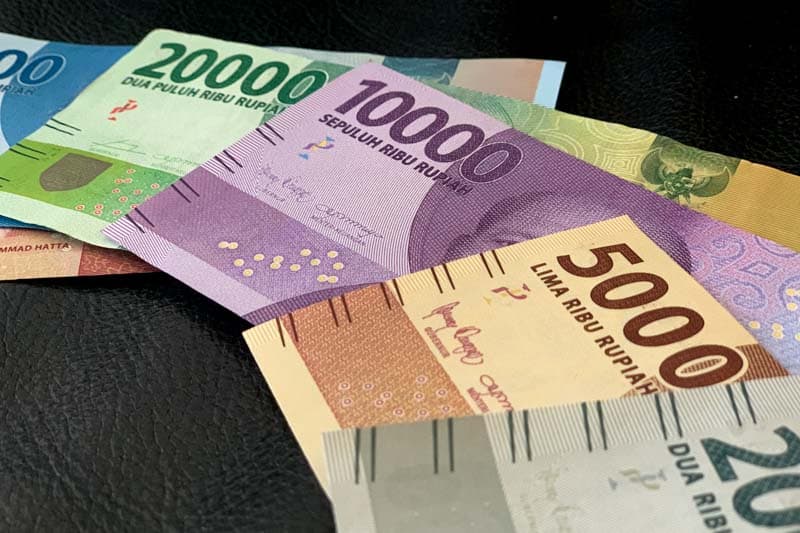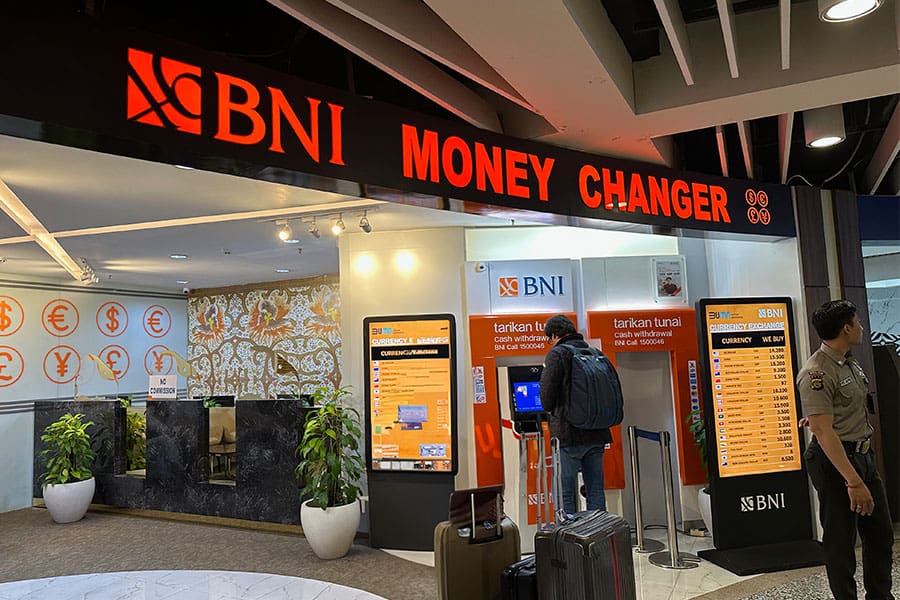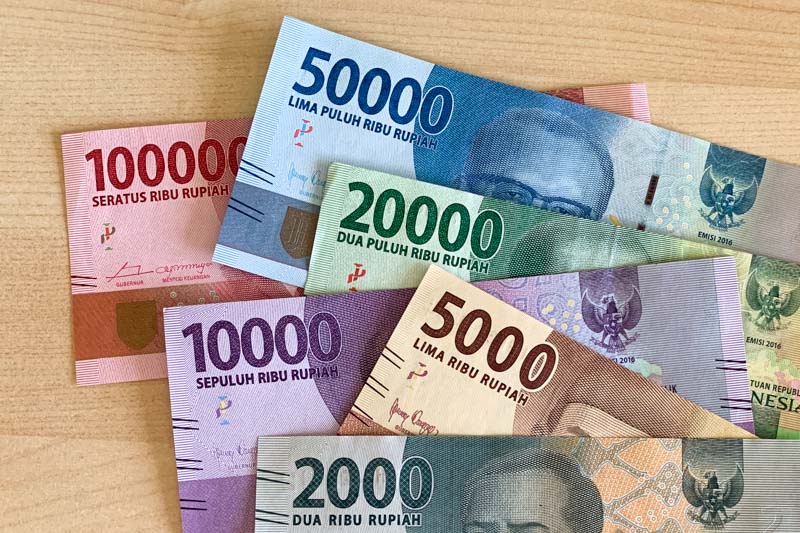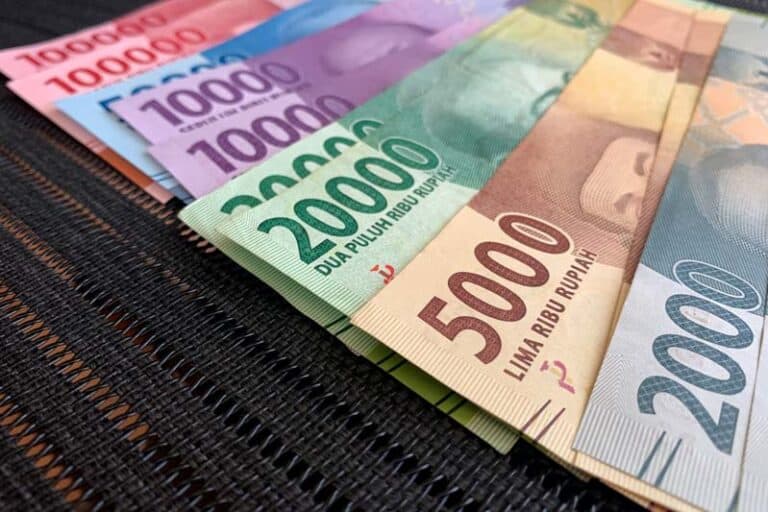Before you travel to Bali, you might wonder about the Indonesian currency, how you should prepare the money, and whether you should change the money beforehand or withdraw the money from the ATM.
What currency is used in Bali?
The Indonesian Rupiah (IDR)
Bali uses the Indonesian Rupiah (IDR) as its official currency, often abbreviated as Rp.
For instance, Rp.10,000 is ten thousand Rupiah. Locals frequently omit the term “thousand” (in Indonesian, “ribu“) when stating prices, so “20” means 20,000 Rupiah.
When you’re at a restaurant and see that the menu says 30k or just 30, it means the price is thirty thousand rupiah. So don’t be confused, it’s just a shortcut way of writing the price.
Denominations of Indonesian Rupiah
Indonesian Rupiah banknotes come in various denominations, including:
- 1,000 (yellow-grey)
- 2,000 (grey)
- 5,000 (light brown)
- 10,000 (purple)
- 20,000 (green)
- 50,000 (blue)
- 100,000 (red)

Tips for exchanging currency in Bali
Money Changer at the Airport
Upon your arrival at the Ngurah Rai International airport in Denpasar – Bali, you can see some ATMs and money changers where you can change money to Bali’s local currency just in case you need to buy anything where a credit card payment isn’t accepted.

Since the exchange rates in the airport money changers are not the best, you might want to avoid exchanging too much currency at Bali airport.
Find Trustworthy Money Changers
Other major money-changers can be easily found in the city or any touristy destinations around Bali. Avoid the random unofficial kiosks, shops, or individuals offering higher exchange rates since their hands might be faster than you could see or imagine, and perhaps it’s too late that you receive less money than it’s supposed to be.
Find trusted and authorized money changers; usually, they have decent places with air-con, good waiting room, cashier windows, and security guards. If you stop by their websites, you might also find that they have many branches and good reviews.
Tip: Always count the money and put it into the envelope before leaving the cashier’s desk.
Currency Convert Tool
Here is the currency converter tool to help you get today’s exchange rate from any foreign currency i.e., Indian rupee, Japanese yen, Australian dollars, US dollars, euros, etc.
Coins are also in circulation, with values like 1,000, 500, 200, and 100. However, coins are not widely used as most amounts are rounded up to avoid dealing with small change.
Check Exchange Rates
Can I use my credit card in Bali?
Credit cards are widely accepted in Bali, including at restaurants, hotels, and shops. While some smaller businesses prefer cash, it’s not a universal rule. It’s advisable to carry some cash for emergencies.
Tip: Be aware of potential fees associated with card usage, typically around 3% of the transaction amount, and check with your bank regarding international transaction fees. And it’s best to inform your bank of your travel plans to avoid any issues with transactions while you are in Indonesia.
Are there ATMs in Bali?
ATMs are plentiful across Bali and typically offer English language settings. They accept cards from major western networks like Cirrus, Maestro, Visa, and Mastercard. Some fees, such as transaction and international exchange fees, may apply, but they are usually reasonable.
The ATMs usually dispense 50,000 and 100,000 Rupiah. Getting the smaller denomination would make it easier for you to do the transaction since the taxi drivers might not have the chance if you hand them the 100,000 rupiah banknotes.
Tip: Be cautious of card skimming scams, especially at public ATMs. Use ATMs located inside banks with security guards, ensure the card slot is secure, and shield your PIN entry.
Tip: It’s always a good idea to set up transaction notifications so you can catch any sketchy activity on your credit card account as soon as possible.
Do you need to tip in Bali?
In Indonesia, tipping is not mandatory, but it’s appreciated as a gesture of gratitude for excellent service. When uncertain how much to tip, rounding up to the nearest Rupiah is common practice.







